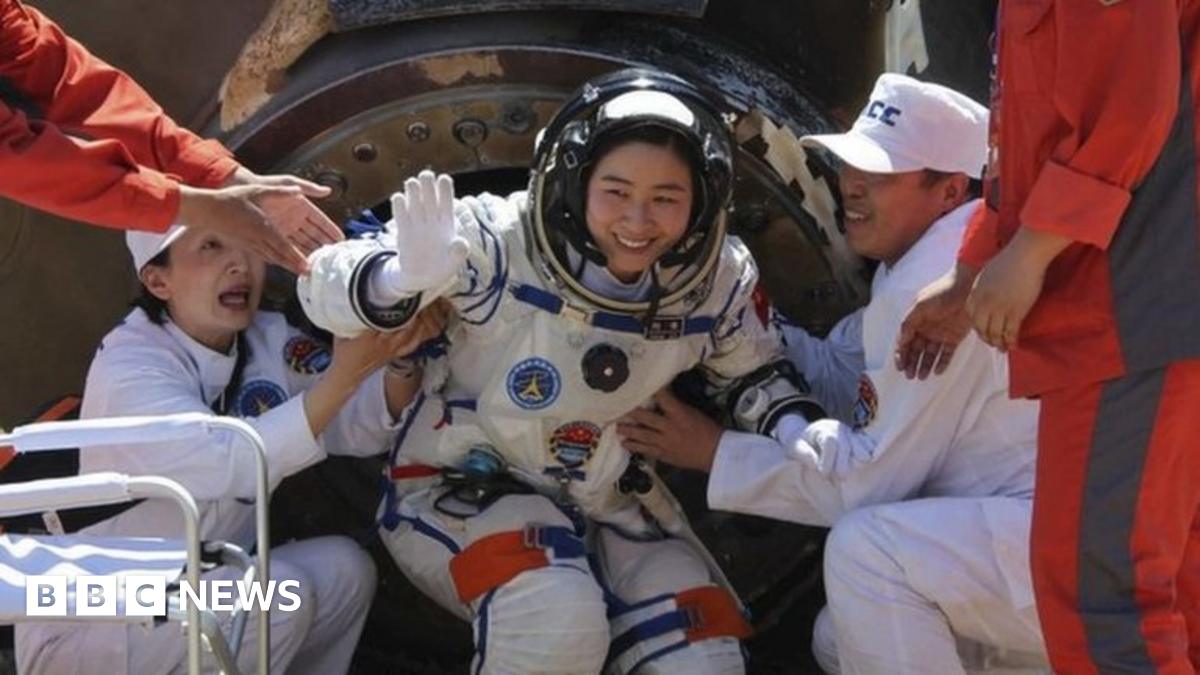China will launch a spacecraft this month to conduct its first manned space docking, state media said Saturday, the latest step in a plan aimed at giving the country a permanent space station by 2020.
The Shenzhou-9 spacecraft and its carrier rocket have already been moved to the launch platform at the Jiuquan Satellite Launch Centre in northwest China, the Xinhua news agency said, quoting the country's manned space programme.
The launch -- China's first manned space mission since September 2008 -- would occur "sometime in mid June", it said.
Officials said the mission would involve three astronauts manually docking with the Tiangong-1 module currently orbiting Earth.
In March state media said China may send its first woman into space this year after including female astronauts in the team training for its first manned space docking.
Niu Hongguang, deputy commander-in-chief of the manned space programme, has said that the Shenzhou-9 crew may include female astronauts, Xinhua reported.
China sent its first person into space in 2003 and has since conducted several manned missions, but has never included a woman.
After the space rendezvous, two of the astronauts will move temporarily into the Tiangong-1 (Heavenly Palace), where they will perform scientific experiments.
One of crew will remain on board the spacecraft as a precaution in case of an emergency, according to the official quoted by Xinhua.
In November, an unmanned Shenzhou-8 spacecraft returned to Earth after completing two space dockings with Tiangong-1 in the nation's first ever hard-to-master "space kiss", bringing together two vessels in high speed orbit.
Mastering space docking technology is a delicate manoeuvre that the Russians and Americans successfully completed in the 1960s.
Tiangong-1, China's first space station module, was launched in September.
China sees its space programme as a symbol of its global stature, growing technical expertise, and the Communist Party's success in turning around the fortunes of the once poverty-stricken nation.
The current programme aims to provide China with a space station in which a crew can live independently for several months, as at the old Russian Mir facility or the International Space Station.
In 2003, China became the third country to send humans into space after Russia and America, and it is now also looking into sending astronauts to the moon, although nothing has been set in stone.
A white paper released late December outlining China's ambitious space programme said the country "will conduct studies on the preliminary plan for a human lunar landing".
No one has been back to the moon since the last US Apollo landing in December 1972.
The Shenzhou-9 spacecraft and its carrier rocket have already been moved to the launch platform at the Jiuquan Satellite Launch Centre in northwest China, the Xinhua news agency said, quoting the country's manned space programme.
The launch -- China's first manned space mission since September 2008 -- would occur "sometime in mid June", it said.
Officials said the mission would involve three astronauts manually docking with the Tiangong-1 module currently orbiting Earth.
In March state media said China may send its first woman into space this year after including female astronauts in the team training for its first manned space docking.
Niu Hongguang, deputy commander-in-chief of the manned space programme, has said that the Shenzhou-9 crew may include female astronauts, Xinhua reported.
China sent its first person into space in 2003 and has since conducted several manned missions, but has never included a woman.
After the space rendezvous, two of the astronauts will move temporarily into the Tiangong-1 (Heavenly Palace), where they will perform scientific experiments.
One of crew will remain on board the spacecraft as a precaution in case of an emergency, according to the official quoted by Xinhua.
In November, an unmanned Shenzhou-8 spacecraft returned to Earth after completing two space dockings with Tiangong-1 in the nation's first ever hard-to-master "space kiss", bringing together two vessels in high speed orbit.
Mastering space docking technology is a delicate manoeuvre that the Russians and Americans successfully completed in the 1960s.
Tiangong-1, China's first space station module, was launched in September.
China sees its space programme as a symbol of its global stature, growing technical expertise, and the Communist Party's success in turning around the fortunes of the once poverty-stricken nation.
The current programme aims to provide China with a space station in which a crew can live independently for several months, as at the old Russian Mir facility or the International Space Station.
In 2003, China became the third country to send humans into space after Russia and America, and it is now also looking into sending astronauts to the moon, although nothing has been set in stone.
A white paper released late December outlining China's ambitious space programme said the country "will conduct studies on the preliminary plan for a human lunar landing".
No one has been back to the moon since the last US Apollo landing in December 1972.






Comment